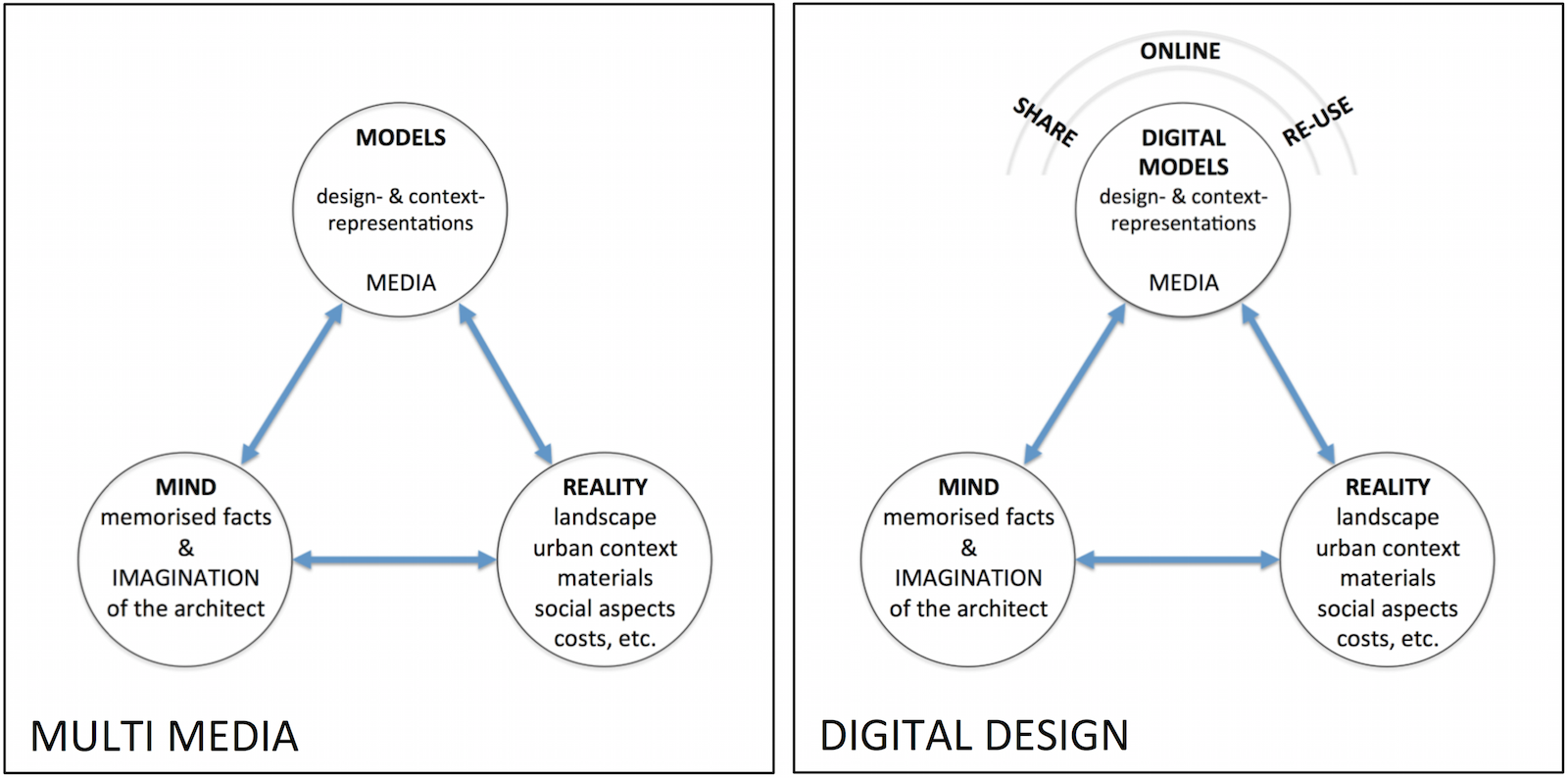6.2.1 Multimedia/Digital Design
Course subject(s)
Module 6 – The Full Picture
Do you remember how we began in Module 1? We discussed three realms for our thoughts: the mind, media and reality. This is what we wrote:
Preparing a shelter or a place to live is and has been a fundamental activity since the beginning of human life. When we build something we do not just rely on our instincts like birds do when they build nests. We humans need more planning and reflection before constructing.
In order to prepare for these real construction activities, we might have a clear idea in mind, or sketch it out on paper. But images on paper and thoughts in our mind need further development, which is where models can be a great tool to mediate between reality and imagination. They support creative thinking whilst maintaining a logical connection to reality.
From roughly 1985-1995, the term ‘multimedia‘ was used for workflows (involving images, models, mock-ups, simulations etc.) to express design, to communicate it and to further explore it in many ways. This can be illustrated in the diagram on the left:

Although multimedia works still exist and although it is still an attractive and creative amalgam of means, the trend nowadays has tended towards working fully in digital. In Week 2 of the course, we discussed digital models, their advantages and disadvantages (see the diagram pictured on the right). This is what we wrote:
… we see that digital models mainly have the same role as physical models, but that they are different because they can be shared online, re-used, and changed in many ways. Disadvantages of 3D digital models might relate to the fact that they are not immediately present and are not tangible.
From around 1995, a trend emerged in model-making that lead to entirely digital approaches, such as Building Information Models (BIM). In this software, creative physical model-making is not always regarded as a feasible working method. The full digital design approach benefits from the digital characteristics it allows: being shareable/online, and reusing data.
In line with the title of this course, we explored physical and digital models in the first two weeks. You were confronted with the two extreme forms of physical and digital models and, by taking on the practical hurdles, you ‘lived through’ the typical characteristics of physical and digital models in architecture. With the physical models you might have experienced that you can apply meaning to any seemingly arbitrary materials that you bring within the scaled world of the scale figures. It is a magical model world where imagination rules.
The opposite could be felt in the photogrammetry modelling challenge. Within the process of taking the 100 pictures and thereafter in the digital file that you received from the cloud photogrammetry service, there was no new personal meaning attached to the digital version of your model. It was a typical ‘model of’.
To recap:
- Models OF depict one confined end situation. Models OF are descriptive; showing something that already exists.
Some examples of Models OF are: hobby railway scale models, models of planets around the sun, or Google Earth. - Models FOR indicate a possibility, a chance to design. Models FOR are explorative and they allow curiosity and invention.
Some examples of Models FOR are: parametric models, sketch models, and Google Earth when you superimpose your own designs.
The advantage of the SketchFab model is, however, that we can all view them; we can all turn them around and even see them stereoscopically at the right size.
Now at the end of this course we would like to elaborate further on the newest developments in AR and VR by using and developing the diagram to look at the relation between ‘mind’, ‘media’ and ‘reality’.

Models in Architecture by TU Delft OpenCourseWare is licensed under a Creative Commons Attribution-NonCommercial-ShareAlike 4.0 International License.
Based on a work at https://ocw.tudelft.nl/courses/models-architecture-design-physical-digital-models/.



